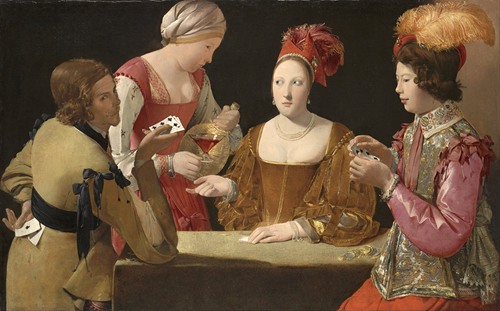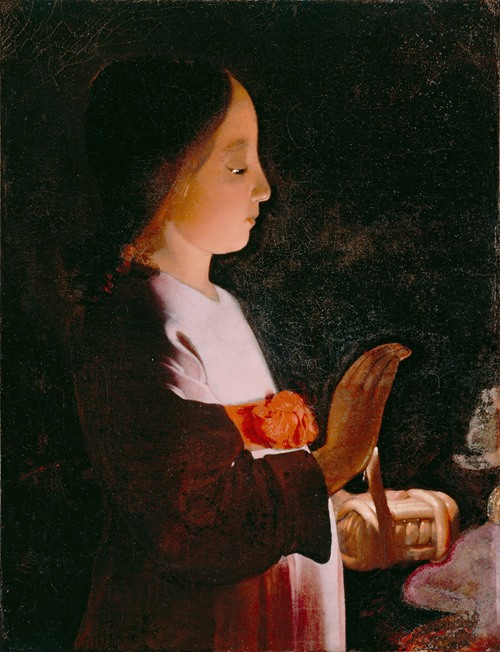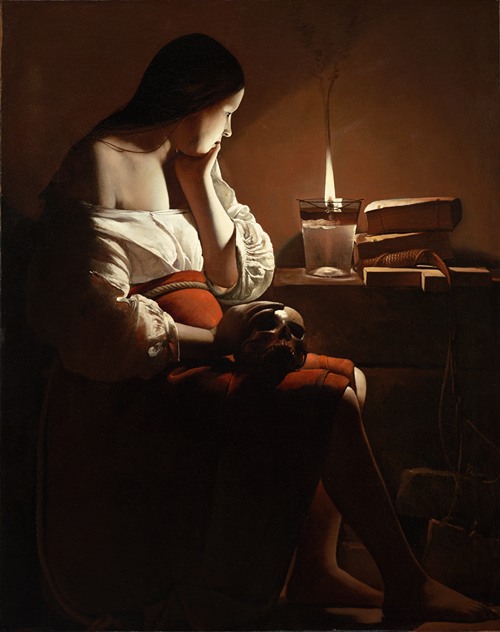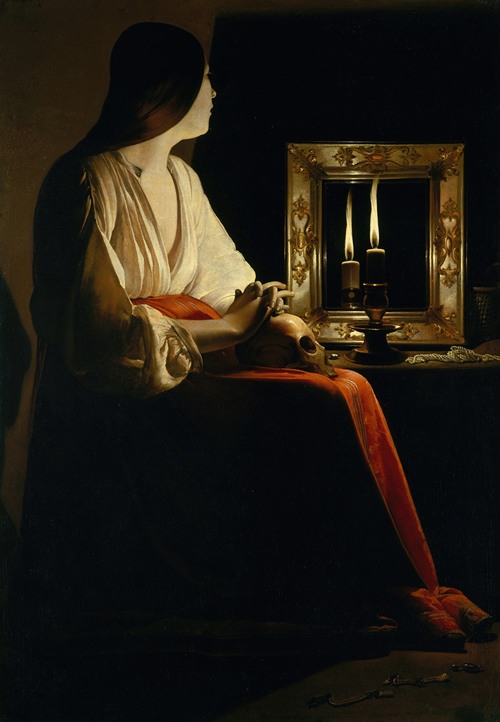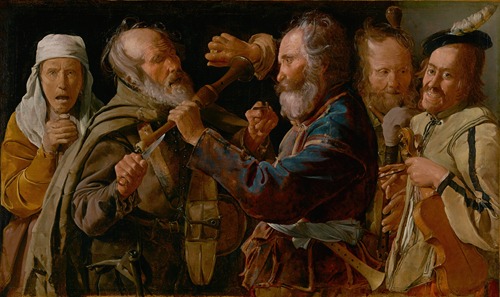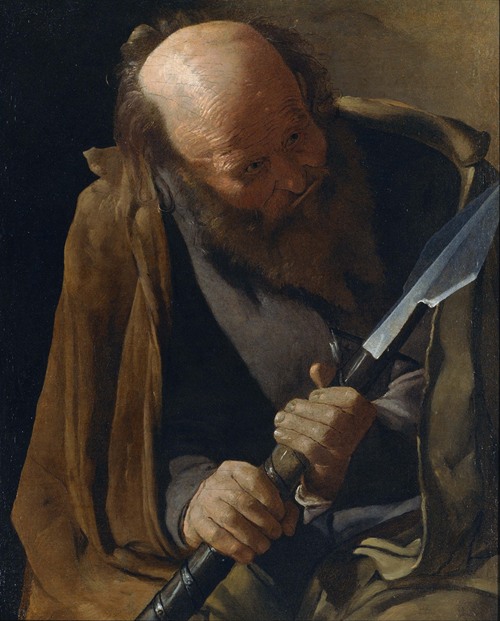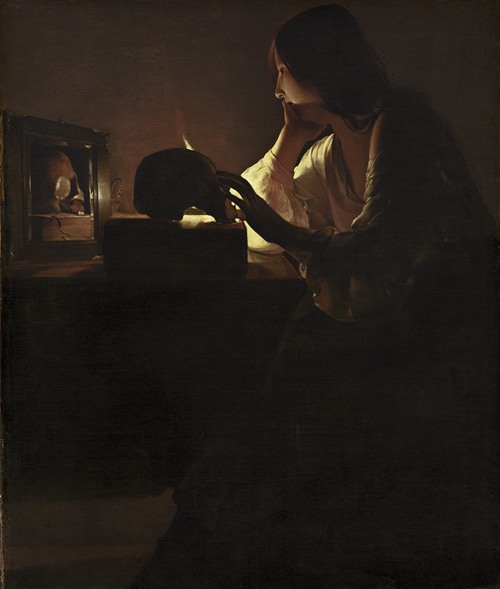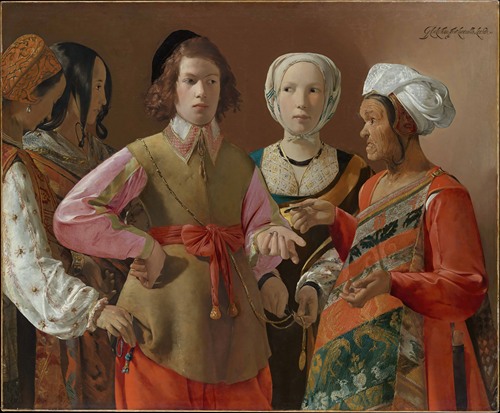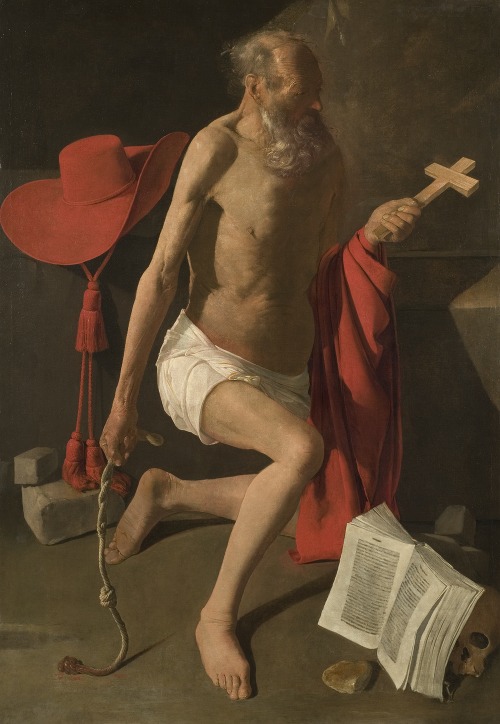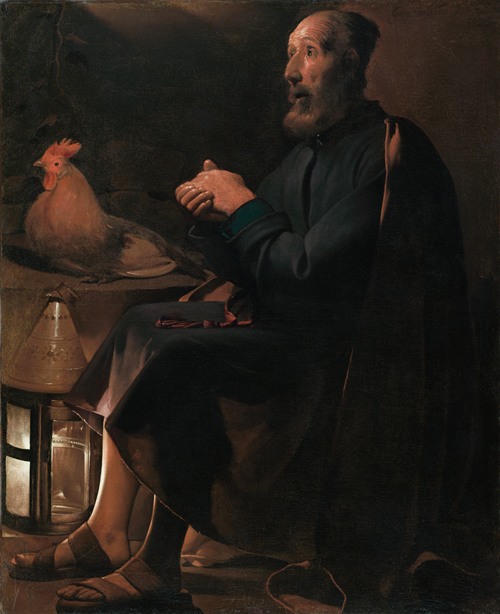
Georges de La Tour was a French Baroque painter, who spent most of his working life in the Duchy of Lorraine, which was temporarily absorbed into France between 1641 and 1648. He painted mostly religious chiaroscuro scenes lit by candlelight.
Georges de La Tour was born in the town of Vic-sur-Seille in the Diocese of Metz, which was technically part of the Holy Roman Empire, but had been ruled by France since 1552. Baptism documentation revealed that he was the son of Jean de La Tour, a baker, and Sybille de La Tour, née Molian. It has been suggested that Sybille came from a partly noble family. His parents had seven children in all, with Georges being the second-born.
La Tour's educational background remains somewhat unclear, but it is assumed that he traveled either to Italy or the Netherlands early in his career. He may possibly have trained under Jacques Bellange in Nancy, the capital of Lorraine, although their styles are very different. His paintings reflect the Baroque naturalism of Caravaggio, but this probably reached him through the Dutch Caravaggisti of the Utrecht School and other Northern (French and Dutch) contemporaries. In particular, La Tour is often compared to the Dutch painter Hendrick Terbrugghen.
In 1617 he married Diane Le Nerf, from a minor noble family, and in 1620 he established his studio in her quiet provincial home-town of Lunéville, part of the independent Duchy of Lorraine which was occupied by France, during his lifetime, in the period 1641–1648. He painted mainly religious and some genre scenes. He was given the title "Painter to the King" (of France) in 1638, and he also worked for the Dukes of Lorraine in 1623–4, but the local bourgeoisie provided his main market, and he achieved a certain affluence. He is not recorded in Lunéville between 1639 and 1642, and may have traveled again; Anthony Blunt detected the influence of Gerrit van Honthorst in his paintings after this point. He was involved in a Franciscan-led religious revival in Lorraine, and over the course of his career he moved to painting almost entirely religious subjects, but in treatments with influence from genre painting.
Georges de La Tour and his family died in 1652 in an epidemic in Lunéville. His son Étienne (born 1621) was his pupil.
